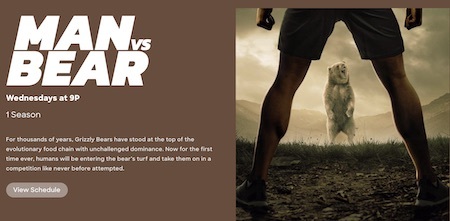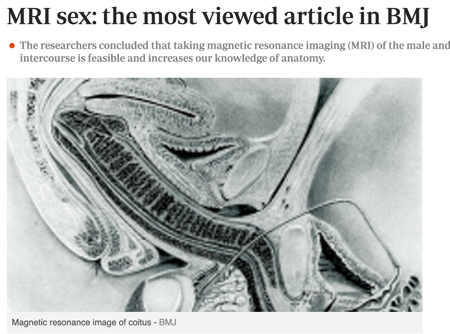Marc Abrahams's Blog, page 130
December 26, 2019
The Coffee Diet, in song and in the news
News reports suggest that coffee can help a person lose weight—something we anticipated in “The Coffee Diet Song,” in 2004. The song was the thrilling conclusion to “The Atkins Diet Opera.” The opera premiered as part of the 2004 Ig Nobel Prize ceremony, at Harvard University.
Here’s video of that 2004 song, and video of a December 2019 news report about coffee.
BONUS: A 2017 news report: “The coffee diet is every caffeine fiend’s wildest dream“

December 25, 2019
Podcast Episode #200: “Disgusting Sounds?”
Disgusting Sounds, Cello Scrotum, Hole Shapes, Headless Mannequins, Medical Oddities, Grateful Dead, Cool Noses, and Black Dress Temperatures.
The Improbable Research podcast is back! In episode #200 (the first episode in the new series!), Marc Abrahams shows some unfamiliar research studies to Jean Berko Gleason, Chris Cotsapas, Melissa Franklin, Robin Abrahams, and Richard Baguley. Dramatic readings and reactions ensue.
Remember, our Patreon donors, on most levels, get access to each podcast episode before it is made public.
1. Jean Berko Gleason encounters:
“Analysis of Chewing Sounds for Dietary Monitoring,” Oliver Amft, Mathias Stäger, Paul Lukowicz, and Gerhard Tröster, UbiComp 2005: Proceedings of the 7th International Conference on Ubiquitous Computing, Tokyo, Japan, 11–14 September 2005, pp. 56–72.
“Food Crushing Sounds: An Introductory Study,” B.K. Drake, Journal of Food Science, vol. 28, no. 2, 1963, pp. 233–41.
“Gnathosonics: A Study of Sounds Produced by the Masticatory Mechanism,” D.M. Watt, Journal of Prosthetic Dentistry, vol. 16, no. 1, 1966, pp. 73–82.
2. Chris Cotsapas encounters:
“Guitar Nipple,” P. Curtis, British Medical Journal, April 27, 1974, p. 226.
“Cello Scrotum,” J.M. Murphy, British Medical Journal, May 11, 1974, p. 335. / “‘Cello Scrotum’ Questioned,” Philip E. Shapiro, Journal of the American Academy of Dermatology, vol. 24, no. 4, April 1991, p. 665.
“Cello Scrotum Confession,” Elaine Murphy and John M. Murphy, British Medical Journal, January 27, 2009, p. 288.
“Pseudo-Cello Scrotum?” Anand Deshpande, British Medical Journal, vol. 388, January 27, 2009, p. 288.
3. Melissa Franklin encounters:
“The Shape of Holes,” Marco Bertamini and Camilla J. Croucher, Cognition, vol. 87, no. 1, 2003, pp. 33–54.
“Holes,” David Kellogg Lewis and Stephanie R. Lewis, Australasian Journal of Philosophy, vol. 48: 206-12; reprinted in Lewis, D. K. (1983). Philosophical Papers, vol. 1. New York: Oxford University Press, 1970, pp. 3–9.
“Information Concentration Along the Boundary Contours of Naturally Shaped Solid Objects,” J.F. Norman, F. Phillips, and H. E. Ross, Perception, vol. 30, 2001, pp. 1285–94.
4. Robin Abrahams encounters:
“Does the presence of a mannequin head change shopping behavior?” Annika Lindström, Hanna Berg, Jens Nordfält, Anne L. Roggeveen, Dhruv Grewal, Journal of Business Research, vol. 69, no. 2, 2016, pp. 517-524.
5. Richard Baguley encounters:
“What to Do If It Gets ‘Bigger'”, C. Kouriefs and N.A. Watkin, Annals of The Royal College of Surgeons of England, vol. 85, no. 2, March 2003, pp. 126–8.
“Serotonin Transporter Promoter Region (5-HTTLPR) Polymorphism is Associated with the Intravaginal Ejaculation Latency Time in Dutch Men with Lifelong Premature Ejaculation,” Journal of Sexual Medicine, Paddy K.C. Janssen, Steven C. Bakker, Janos Réthelyi, Aeilko H. Zwinderman, Daan J. Touw, Berend Olivier, and Marcel D. Waldinger, vol. 6, 2009, pp. 276–84.
“Effect of Different Types of Textiles on Sexual Activity. Experimental Study,” Ahmed Shafik, European Urology, vol. 24, no. 3, 1993, pp. 375–80.
Excrement in the Late Middle Ages— Sacred Filth and Chaucer’s Fecopoetics, Susan Signe Morrison, Palgrave Macmillan, New York, 2008.
On Bullshit, Harry G. Frankfurt, Princeton University Press, Princeton, 2005.
“A Kind Word for Bullshit: The Problem of Academic Writing,” Philip Eubanks and John D. Schaeffer, College Composition and Communication, vol. 59, no. 3, February 2008, pp. 272–88.
“Picadura de Anémona en Pene” [article in Spanish], J.M. Janeiro Pais, et al., Actas Urológicas Españolas, vol. 32, no. 8, September 2008, p. 864.
6. Melissa Franklin encounters:
“An Experiment in Dream Telepathy with ‘The Grateful Dead’,” Stan Krippner, Monte Ullman and Bob Van de Castle, Journal of the American Society of Psychosomatic Dentistry and Medicine, vol. 20, no. 1, 1973, pp. 9-17.
7. Richard Baguley encounters:
“The Air-Conditioning Capacity of the Human Nose,” Sara Naftali, Moshe Rosenfeld, Michael Wolf, and David Elad, Annals of Biomedical Engineering, vol. 33, no. 4, 2005, pp. 545–53.
“The Cooling Power of the Pigeon Head,” Robert St. Laurent and Jacques Larochelle, Journal of Experimental Biology, vol. 194, 1994, pp. 329–39.
8. Jean Berko Gleason encounters:
“Why Do Bedouins Wear Black Robes in Hot Deserts?” Amiram Shkolnik, C. Richard Taylor, Virginia Finch, and Arieh Borut, Nature, vol. 283, 1980, pp. 373–75.
“Penetrance of Cattle Coats by Radiation,” John C. D. Hutchinson and Graham D. Brown, Journal of Applied Physiology, vol. 26, no. 4, 1969, pp. 454–64.
Bruce Petschek, Audio Engineer
Jon Shedler, Audio Engineer
Seth Gliksman, Production Assistant

A Romanian Literary Review: Radu Remembers the Igs
 The Ig Nobel prizes are popping up in even the most literary worlds. The Cotidianul site invites you to [here we machine translated from Romanian into English]: “read excerpts from the work of Gheorghe Schwartz – Zu Island, published by Tracus Arte Publishing House in 2016″:
The Ig Nobel prizes are popping up in even the most literary worlds. The Cotidianul site invites you to [here we machine translated from Romanian into English]: “read excerpts from the work of Gheorghe Schwartz – Zu Island, published by Tracus Arte Publishing House in 2016″:
Radu remembers – when was that? – a discussion on a terrace on Constitution Street, a discussion about the Ig Nobel prizes and useless research. The need for useless ideas and objects also making the difference between human and animal, at least that’s how he heard a talk on television, a discussion that often came to mind. Even in the most unexpected moments.
Cotidianul presents this action photo of author Gheorghe Schwartz:

December 24, 2019
Somewhat Improbable 50 Foremost Psychologists
A new list of “The 50 Most Influential Living Psychologists in the World“ includes
three (3) Ig Nobel Prize winners,
one (1) Nobel laureate, and
one (1) member of the Luxuriant Flowing Hair Club for Scientists (LFHCfS).
The most valuable thing about most “Most” lists, one could argue, is the arguments they can provoke. This particular “Most” list is the work of an organization called TBS.

December 23, 2019
Why Santa Claus, like everyone else, should get a flu shot
This new paper somehow avoids saying the most important thing it could say: Santa Claus, like everyone else, ought to be diligent about getting an annual flu shot.
The study is: “What would happen if Santa Claus was sick? His impact on communicable disease transmission,” Yuki Furuse, The Medical Journal of Australia, vol. 211, no. 11, December 2019, pp. 523-524.
The author, at Kyoto University, explains:
In some areas of the world it is believed that Santa Claus brings presents to children on Christmas Eve…. It is possible that he could spread pathogens if infected with a communicable disease at the time of his yearly visit. In this study, we used mathematical modelling to investigate the probability and impact of influenza and measles trans-mission by Santa Claus on Christmas Eve….
We found that disease transmission by Santa Claus potentially has a great impact on public health. When Santa Claus was infected with influenza and transmitted the disease effectively through contact with children, the final size of a seasonal outbreak increased slightly but statistically significantly.
(Thanks to Raymond Kunikane Terhune for bringing this to our attention.)
A Reminder About Children’s Reactions to Santa Claus
We take this opportunity to remind you about the series of research studies done by Ig Nobel Prize winner John Trinkaus. (Professor Trinkaus was awarded an Ig Nobel Prize in Literature, in 2003, for having published nearly 100 academic studies about things that annoy him.) Trinkaus observed the children’s reactions to visiting Santa Claus at a shopping mall. Trinkaus found that all was not joy.

Improbable Research—Special Issues
Secrets of an ugly voice
 What are the secrets of an ‘ugly’ voice? Steps towards answers were provided in 2006 by Professor Johan Sundberg, (personal Chair (Emeritus) in Music Acoustics at the department of Speech Music and Hearing KTH Royal Institute of Technology, Stockholm), in his paper for Advances in Cognitive Psychology, 2006 • volume 2 • no 2-3 • 131-143.
What are the secrets of an ‘ugly’ voice? Steps towards answers were provided in 2006 by Professor Johan Sundberg, (personal Chair (Emeritus) in Music Acoustics at the department of Speech Music and Hearing KTH Royal Institute of Technology, Stockholm), in his paper for Advances in Cognitive Psychology, 2006 • volume 2 • no 2-3 • 131-143.
“Timbral beauty is an important aspect of a singer’s voice, but certainly also elusive: what is beauty and from what does it emerge? Yet, the beauty of a voice is often striking, but perhaps, and even more so, the ugliness of some voices.”
Here’s a human example from the paper [ .wav format ]
And a synthesised example [ .wav format ]
See ‘The KTH Synthesis of Singing’ by Johan Sundberg
[Research research by Martin Gardiner]

December 20, 2019
Man vs. Bear, without Troy Hurtubise
A new TV series called “Man Vs Bear” tries to fulfill some of the ambitions of Ig Nobel Prize winner Troy Hurtubise, but without using the protective suits of armor that Troy tried to perfect. The TV producers describe what they hope to portray:
For thousands of years, Grizzly Bears have stood at the top of the evolutionary food chain with unchallenged dominance. Now for the first time ever, humans will be entering the bear’s turf and take them on in a competition like never before attempted.
Back then, there was Troy
Troy Hurtubise was awarded the 1998 Ig Nobel Prize for safety engineering, for developing, and personally testing a suit of armor that is impervious to grizzly bears.
You can see some of Troy’s early work, in the documentary film “Project Grizzly“, produced by the National Film Board of Canada:
Then, a grizzly man who did not heed the teachings of Troy
Like the people in this new TV series, others have tried interacting warmly with grizzly bears. At least one of those people did not fare well. You can read about that in the little essay “Farewell, Treadwell. Praised Be Troy” (That little essay is about, among other things, the movie “Grizzly Man“, with a cameo of sorts by actor Leonardo DiCaprio.) Here is a promotional trailer for “Grizzly Man”:
Appendix: Farewell, Troy
Troy Hurtubise himself did come to a sad end, but not one that involved grizzly bears.

“The most viewed medical video in the world” [sex in an MRI]
French medical journalist Marc Gozlan reminds us that the most viewed article in the history of the British Medical Journal led to the creation of what became “The most viewed medical video in the world“.
Here is that video:
Where did that come from?
Here’s the story of how that video came to be, and how it came to be seen. We are not unhappy at having played a part in that story: “Sex and videotape“.

December 19, 2019
“MRI Sex: The most viewed article in BMJ”, after 20 years
An editor of the British Medical Journal (The BMJ) told us a few years ago that one particular BMJ paper, published in 1999, has—from the moment that paper was awarded an Ig Nobel Prize in the year 2000— consistently drawn more web visitors—many, many more—than anything—anything—else published in the history of The BMJ. Everything every published in The BMJ, dating back to 1840; is accessible on the BMJ web site.
Th 20th anniversary of of that paper being published is being celebrated around the world, as well as in The BMJ itself:
This Christmas marks the 20th anniversary of the publication of “Magnetic resonance imaging of male and female genitals during coitus and female sexual arousal.” Why did it become one of the most downloaded BMJ articles of all time?
The BMJ greeted the prize, in 2000, with an essay that begins:
The BMJ gloried in new laurels last week when its article on the imaging of male and female genitals during coitus, published in last year’s Christmas issue, won the prize for medicine at the annual Ig Nobel prizegiving at Harvard University (BMJ 1999;319:1596-600).
The Spanish newspaper ABC reports:
MRI Sex: The most viewed article in BMJ
This year marks the 20th anniversary of the publication of, possibly, the most downloaded scientific article in the British Medical Journal. “Magnetic resonance imaging of male and female genitals during intercourse and female sexual arousal,” it was titled…
Although in its first year the research picked up the Ig Nobel prize for medicine, at that time, nobody in “The BMJ” thought the study was particularly useful clinically or scientifically, but it contained “a striking image using a new technology, and everyone was I agree that readers might be interested in seeing it,” writes Tony Delamothe, former editor of the magazine.
Here’s another of the many reports, this one in the German newspaper Bild:
Ig Nobel Prizes and The BMJ
The Ig Nobel Prize for medicine, in the year 2000, was awarded to Willibrord Weijmar Schultz, Pek van Andel, Eduard Mooyaart, and Ida Sabelis, for their report, “Magnetic Resonance Imaging of Male and Female Genitals During Coitus and Female Sexual Arousal.”
Other studies published in The BMJ, too, have been honored with Ig Nobel Prizes. Navjoyt Ladher, The BMJ‘s clinical editor discussed this in an essay in December 2016, saying:
The [MRI sex] paper also has the honour of being the recipient of an Ig Nobel award. The prize is given each year by the Annals of Improbable Research for studies that are particularly unusual and imaginative. In her acceptance speech for the award, author and research participant Ida Sabelis described seeing the MRI images for the first time: “Not so much a passport photo for daily use but surely a shot that shows so much that it makes me speechless.”
Perhaps unsurprisingly, given the focus on quirky research questions, several other Christmas BMJ papers have also received the prize (box 1). These papers have examined the effect of different foods on the appetite of leeches, explored the occupational hazards of sword swallowing, and assessed the predictive value of abdominal pain in people with appendicitis when they go over speed bumps.
Since then, The BMJ has continued wracking up Ig Nobel wins, as you can discover (or re-discover) for yourself, by looking at the list of all Ig Nobel Prize winners.
Here’s a short documentary made ten years or so ago about the MRI sex study:

Marc Abrahams's Blog
- Marc Abrahams's profile
- 14 followers












